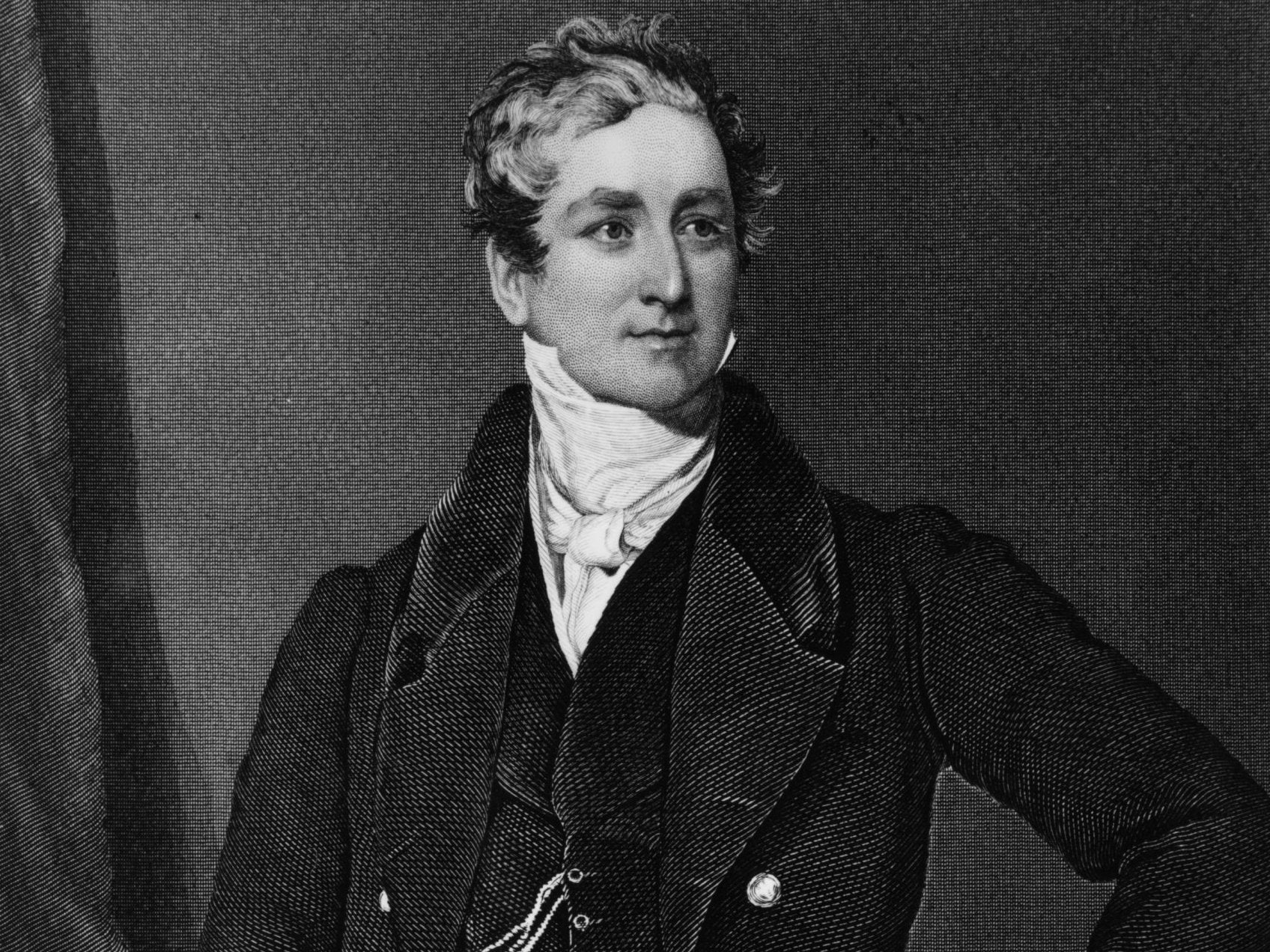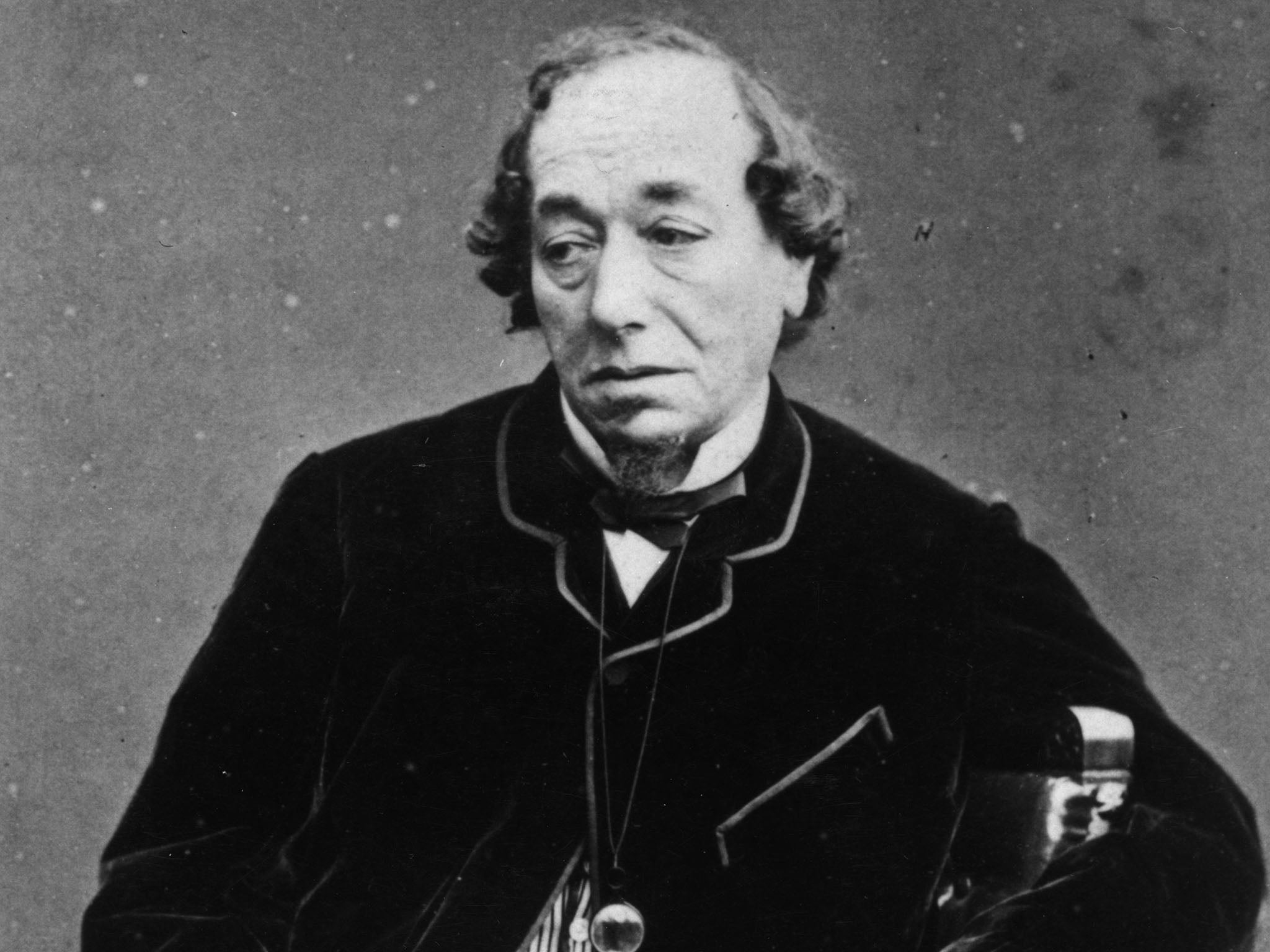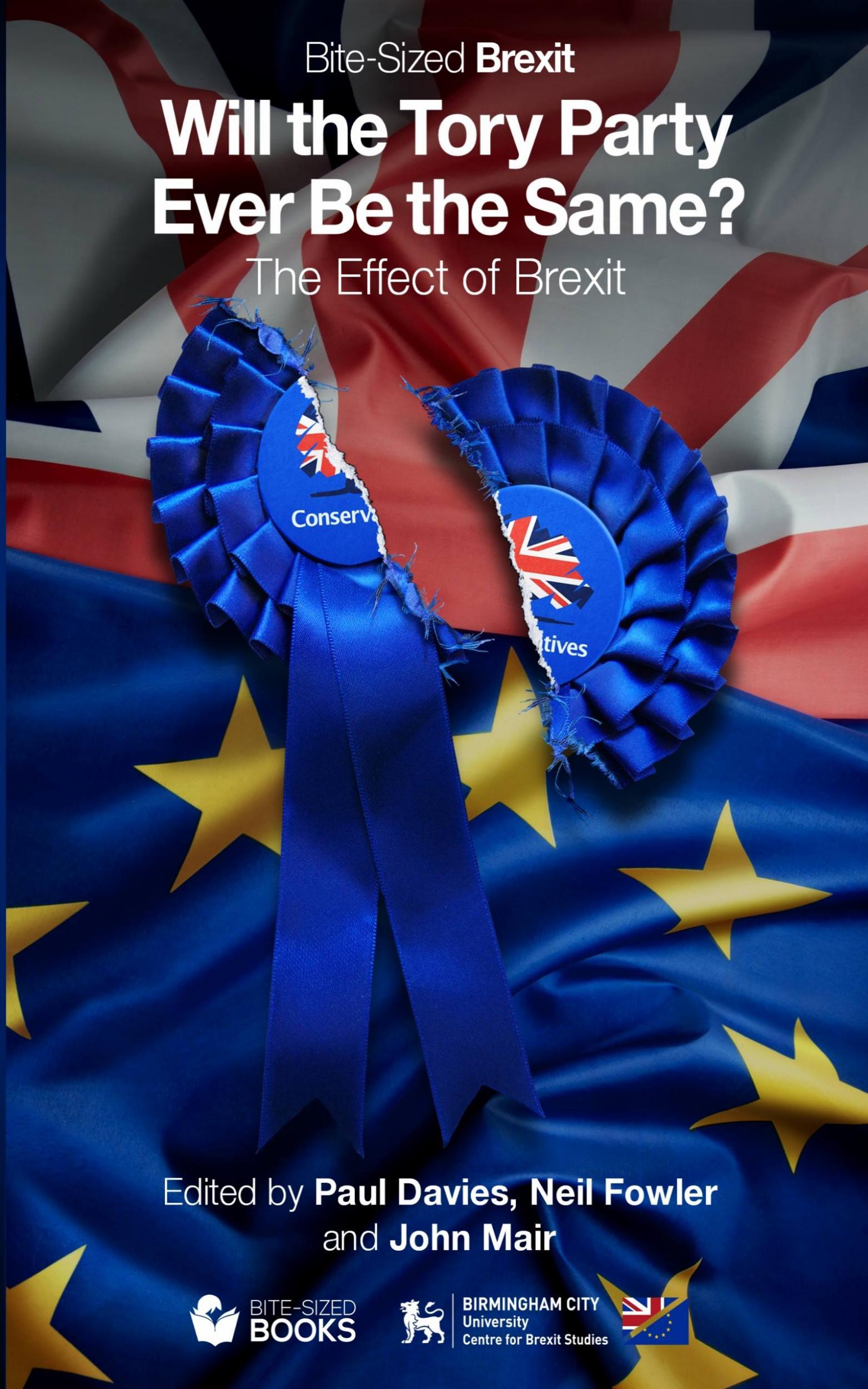Brexit’s historical parallels aren’t as obvious for the Conservative Party as you might think
It is tempting to imagine that Brexit is to Theresa May what the Corn Laws were to Robert Peel. But as Richard Gaunt explains in a new book, ‘Will the Tory Party Ever Be the Same?’, the truth is more complicated

For Conservatives, there is no more salutary historical lesson of the consequences of leading a divided party than the experience of Sir Robert Peel (1788-1850).
Elected with a governing majority of 76 in the general election of June 1841, the party was split for a generation after Peel insisted on pursuing a policy of free trade, through the repeal of the Corn Laws, five years later.
The party, created in the aftermath of the 1832 Reform Act, divided, with roughly one-third acting as “Peelites” until the 1860s and the other two-thirds continuing without them. Many leading Peelites joined the newly formed Liberal Party after 1859 and the Conservative Party did not form another majority government until Benjamin Disraeli’s triumph at the general election of 1874.
A historical parallel?
Superficially, the parallels between Peel’s experience and the difficulties facing Theresa May over Brexit are compelling. The prime minister faces a (more or less) divided cabinet and party on an issue of fundamental importance which will set the path of national policy for a generation to come.
But while Peel argued that he had pursued the most conservative act of his life, by placing country before party, many commentators believe that it will prove impossible for May to deliver on the result of the 2016 EU referendum while retaining the loyalty and support of her party. Indeed, as a result of the pressure applied by different constituencies of opinion within the party, she has already had to concede that she will not lead the Conservatives into the next general election.
During 2018, Jacob Rees-Mogg explicitly likened May’s situation to that of Robert Peel in 1846; however, whilst Brexiteers typically extol historical parallels, they would do well to consider the fundamental differences between the two episodes.
First, Peel’s Conservatives were elected to parliament in June 1841 on a pledge to uphold economic protection, in the face of the Whigs’ proposed relaxation of duties on imports including corn. While Peel avoided a personal pledge on the issue, many of his backbenchers regarded it as a betrayal of their electors when he subsequently pursued repeal, in defiance of the platform upon which they had been returned to power.
Peel was dismissive of those Conservative backbenchers who fought by-elections to secure a new electoral mandate, after coming out in favour of the measure. For him, sovereignty resided in parliament, under the clear direction of the executive.
Though there may be comparisons here with the way in which parliament has asserted its right to be actively involved in the Brexit process, the crucial difference arises from the fact that David Cameron’s Conservative manifesto for the 2015 general election promised a UK-wide referendum on the European issue.
Against all predictions, Cameron secured outright victory at that election and the referendum was legislated for by parliament, with large majorities. It was the outcome of the referendum which entirely transformed the situation. In many respects, Theresa May, who argued to remain in the EU, inherited a situation not of her making.

Nevertheless, at the 2017 general election, May’s Conservatives were elected (alongside Jeremy Corbyn’s Labour Party) on a specific platform to execute the referendum result by leaving the European Union. Many of the subsequent difficulties faced by the Conservatives have been over how far and in what ways to do so.
Straws in the wind
Peel, by contrast, was moving inexorably towards free trade throughout his 1841-6 government – with many bruising encounters with his backbenchers preceding the final rupture.
For example, during 1844, Peel differed from his backbenchers over a reduction to the sugar duties. The stand-off, which led him to threaten resignation, resulted in the reversal of an adverse vote against his government. The rising Conservative backbencher, William Gladstone, was moved to observe: “It is evident that Peel’s mind and the others leaning the same way have been influenced not principally by the difficulties of this individual question, but by disgust with the immense, uncheered [sic], unrelieved labour of their position and with the fact that their party never seems to show energy except when it differs from the leaders.”
Unlike May, Peel was party leader at a time when there was no formal mechanism for election to this position, and he had to use his authority to try and convince his cabinet of the arguments for repeal
Something of the same spirit was evident in the House of Commons during the 2018 debates over the withdrawal agreement and political declaration on the future relationship between the UK and the EU.
In Peel’s case, it was the failure of the Irish potato crop in 1845 which precipitated his conclusion that there was no alternative to meet the crisis but full repeal; a diagnosis which many of his “Protectionist” backbenchers did not agree with. The Duke of Wellington was supposed to have remarked that: “Rotten potatoes have done it all. They have put Peel in a damned fright.”
However, the direction of government policy, over the preceding five years, had given a clear signal of Peel’s ultimate destination. Swathes of duties on imported goods and raw materials and exported manufactured goods had been reduced, especially in the budgets of 1842 and 1845. This had been accompanied by the institution of a “temporary” income tax (payable at seven pence in the pound on salaries above £150 per annum) to help compensate the initial loss in revenue.
Peel’s explicit sympathies for changing course may thus be contrasted with May’s tendency – at least until the revelation of the Chequers plan in July 2018 – to keep her powder dry.
This was a predicament she had brought upon herself. By failing to secure an enhanced majority in the 2017 general election, necessary compromises were imposed upon her. She found herself at the head of a minority government, comprised from politically combustible materials, and working with a partner (the Democratic Unionist Party) which represented part of the United Kingdom more than usually impacted by the terms of the withdrawal agreement. Her failure to keep them on side may ultimately prove fatal for her government.
I am their leader
Whereas May lost her foreign secretary and Brexit secretary as a result of pinning her colours to the Chequers mast, Peel initially resigned when he failed to gain the support of his cabinet, after revealing his change of policy to them. This reveals fundamental differences in their respective positions as leader of the Conservative Party.
The circumstances surrounding the election of Theresa May as leader in 2016 had ensured that leading Brexiteer candidates fell by the wayside. Though May’s path to the premiership was eased, she has subsequently faced continued accusations of lukewarm commitment to Brexit. Her subsequent actions, not least in deferring the critical vote on the withdrawal agreement in December 2018, led to a vote of confidence in her leadership which saw her emerge victorious, though with about one-third of her party openly voting against her. This was an ominous figure, in terms of parallels with 1846.
By contrast, Peel was party leader at a time when there was no formal mechanism for election to this position, and he had to use his authority to try and convince his cabinet of the arguments for repeal.
Having resigned in December 1845, he offered his personal support to any incoming ministry committed to repeal. However, Lord John Russell, the leader of the Whig party, failed in his attempt to form an administration and, in Disraeli’s immortal phrase, “passed the poisoned chalice” back to Peel.
Newly emboldened, Peel assembled a new cabinet (losing only two ministers in the process) and, secure in the belief that he was the only person able to provide good government for Queen Victoria, he now pursued repeal, increasingly heedless of the impact upon his party.
The bitterness within Conservative ranks was given voice by two talented backbenchers, Benjamin Disraeli and Lord George Bentinck, who not only regarded repeal as a betrayal of party but as a slight of honour.

Peel was able to pursue repeal, in spite of the reservations of a significant minority within his party, largely because of the supportive votes of the Whig opposition. If May is to succeed in maintaining her fragile hold over the cabinet, and securing backing for her proposals in the House of Commons, she will likewise need to detach some members of the opposition parties to support her.
She will also need to secure support in the House of Lords. During 1846, the progress of the repeal bill was eased considerably by the leadership of the Duke of Wellington. The Iron Duke allowed Conservative peers to dissent from government policy without imperilling the future strength of the party in the upper house.
However, perhaps the greatest difference between repeal and Brexit lies in the fact that May is not working in a vacuum.
Brexit is a negotiation, not only within the cabinet, the Conservative Party and both Houses of Parliament, but with the 27 other EU member states, the European Commission and the European parliament. Whatever unanimity might be achieved in British domestic politics will have been hard won, by comparison with the impressive unity of purpose demonstrated by the UK’s negotiating partners.
Historical precedents, current prospects
Though Sir Robert Peel’s government enacted repeal, it was defeated immediately afterwards by a combination of “Protectionist” Conservatives, Whigs and Irish MPs, who rallied together to defeat the government on a piece of legislation affecting Ireland. The current government’s reliance on the DUP for its majority, and the centrality of the Irish border issue to Brexit, means that Ireland is a stronger point of comparison between the situation of Theresa May and Robert Peel than most MPs realise.

The perils of divided parties and long periods in opposition are evident to any informed student of British political history, having been experienced by the Conservatives in 1846, the Liberals in 1886 (and 1918), and Labour in 1931. On each occasion, the party in question was out of office for a generation and, in the case of the Liberals, never resumed power except as a coalition partner. As a party more than usually defined by its attachment to history, the Conservatives may yet pull back from the brink of a division which is by no means inevitable. The sobering reflection for Conservatives must be that none of the promised solutions for the party’s “European problem” have so far enabled them to do so.
Dr Richard A Gaunt is associate professor in history at the University of Nottingham and the author of ‘Sir Robert Peel. The Life and Legacy’ (London and New York, 2010). He is currently completing a three-volume edition of contemporary perspectives on the life and political career of Sir Robert Peel
This essay is extracted from ‘Will the Tory Party Ever Be the Same?’ edited by Paul Davies, John Mair and Neil Fowler, published by Bite-Sized Books and also available from Amazon.
Join our commenting forum
Join thought-provoking conversations, follow other Independent readers and see their replies
Comments